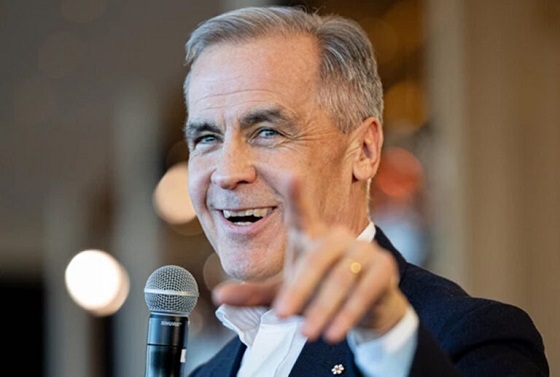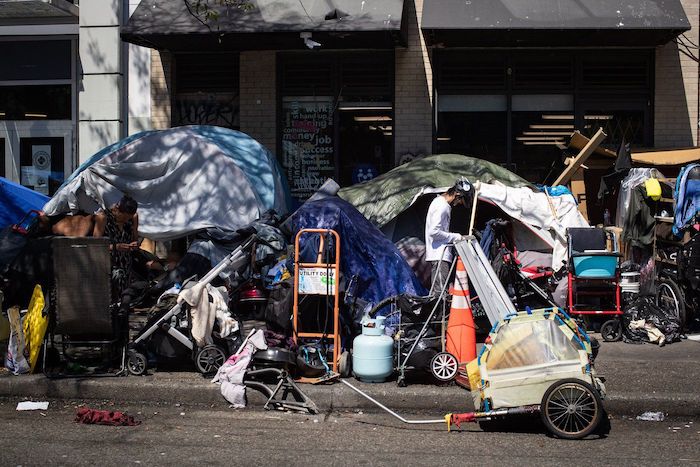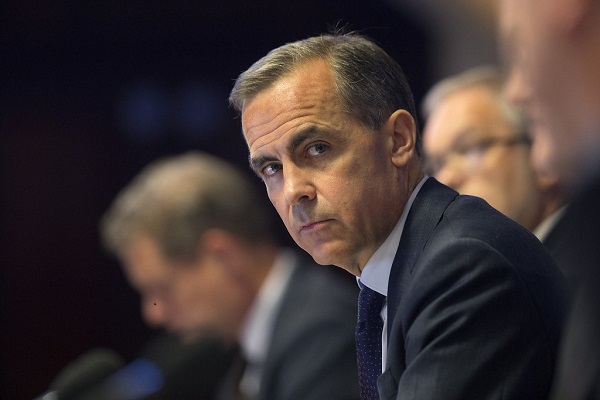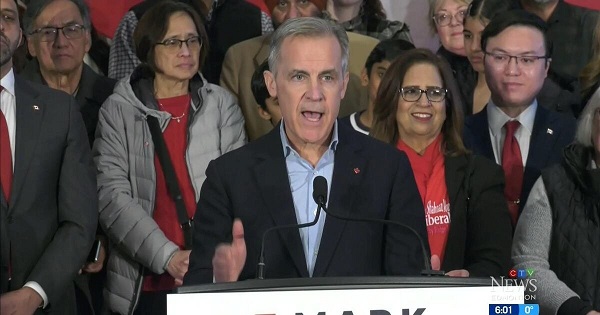National
The Queen visited Canada more than any other country during her long reign

By Michael MacDonald in Halifax
It wouldn’t be a stretch to suggest the Queen held a special place in her heart for Canada.
As an ardent world traveller, she visited this country more than any other during her reign, and she was in the habit of referring to it as home.
If you include overnight visits and aircraft refuelling stops, the Queen visited Canada no less than 31 times since her coronation in June 1952, according to the Canadian Heritage Department.
In second place is Australia with 18 visits, including stopovers, according to the The Royal Family’s official website.
“I think she really developed a warm affection for us,” says Barry MacKenzie, a spokesman for the Monarchist League of Canada. “She’s done a marvellous job of taking advantage of all of those opportunities to meet Canadians and to develop a taste for life here.”
Here are some highlighfts from her visits:
1. Fall 1951
Royal watchers say the Queen’s close relationship with Canada started even before she acceded to the throne.
On Oct. 8, 1951, Princess Elizabeth arrived at Montréal–Dorval International Airport, where she was met by 15,000 people on the tarmac.
Over the next 33 days, the princess and her husband, Prince Philip, travelled across the country and back again, visiting a total of 60 communities and every province.
She took in hockey games in Montreal and Toronto, made a side trip to Washington, D.C., to visit U.S. President Harry Truman, and square danced at Rideau Hall.
The quiet, 25-year-old princess and the gregarious prince were met by large crowds wherever they went, with some reports suggesting that one million people turned out to see them in Toronto and even more showed up in Montreal.
“It was an incredible feat of stamina,” says MacKenzie, a history instructor at St. Francis Xavier University in Antigonish, N.S.
“People recognized that this young woman was next in line …. And she also had the added bonus of having a husband who was a war hero. They were young. They were beautiful.”
At the end of the tour, in a farewell radio message broadcast from St. John’s, N.L., Princess Elizabeth referred to Canada as her “second home.”
“Wherever we have been throughout the 10 provinces … we have been welcomed with a warmth of heart that has made us feel how truly we belong to Canada.”
—
2. Fall 1957
The Queen’s first official visit to Canada was a high-profile, four-day tour that included her first ever televised speech, broadcast live from Rideau Hall on Oct. 13, 1957.
The next day, she officially opened a new session of Parliament by reading the speech from the throne in the Senate chamber, with Prince Philip at her side.
It was the first time a reigning monarch opened the Canadian Parliament. The speech was also carried live on television.
—
3. Summer 1959
The longest royal tour in Canadian history was a gruelling, 45-day marathon that started on June 18, 1959 in eastern Newfoundland.
The highlight of the visit was the official opening of the St. Lawrence Seaway on June 26, when the Queen was joined by U.S. President Dwight Eisenhower aboard the Royal Yacht Britannia at the lift-lock near St. Lambert, Ont.
Five days later, on Canada Day, the Queen delivered a televised address from a sunny veranda at Rideau Hall.
“If I have helped you feel proud of being Canadian, I shall feel well satisfied, because I believe with all conviction that this country can look to a glorious future,” she said.
The Queen and Philip travelled to every province and both territories, logging 24,000 kilometres.
“This is the first time since she became Queen that everyone in Canada had the opportunity to see her,” says MacKenzie. “And it’s the last time that we see one of these huge undertakings.”
The official itinerary included a trip to the Calgary Stampede, where Philip donned a cowboy hat, and numerous stops along the Great Lakes, including a trip to the World’s Fair in Chicago.
On the last leg of their tour, the young couple made an unscheduled stop in eastern New Brunswick to meet the families of fishermen who died on the night of June 20-21 when a hurricane roared over the Northumberland Strait. The brutal storm capsized more than two dozen fishing boats, killing 35 men and boys — most of them from the village of Escuminac.
At Pointe-du-Chêne, N.B., the Queen and the Duke of Edinburgh met with 16 grieving widows and their families on July 29.
Among them was a “tiny grey-haired woman in black, surrounded by 12 of her 18 surviving children,” The Canadian Press reported at the time.
“(She) sat on a Northumberland Strait wharf …. and blinked back the tears as she received a sympathetic smile and kind word from Queen Elizabeth.”
—
4. Summer 1967
The Queen and Prince Philip spent six days in Ottawa and Montreal to celebrate Canada’s centennial.
Under bright sunshine on Parliament Hill, 50,000 people watched as the Queen cut into a gigantic birthday cake decorated with the coat of arms of each province and territory.
And in Montreal, the Queen rode the automated monorail that was part of the Expo 67 international exhibition.
That brief visit was marked by tight security as organizers wanted to avoid what happened in 1964 when the Queen’s visit to Quebec City was marred by waves of police using truncheons to round up separatist protesters who were shouting slogans and singing irreverent songs.
—
5. Spring 1982
A four-day tour of Ottawa culminated in a ceremony on a sleet-soaked Parliament Hill, where the Queen joined Prime Minister Pierre Trudeau to sign the proclamation of the Constitution Act
The act gives the Canadian Parliament the right to amend the constitution without the approval of the British Parliament.
The Act’s passage, marked by royal assent from the Queen on April 17, 1982, signalled the last stage of Canada’s political evolution from colony to fully independent state.
But it did not signal the end of the monarchy in Canada. Far from it. The Queen remained Canada’s head of state and she retained her title as Queen of Canada.
“She wasn’t signing a document and giving us our freedom,” says MacKenzie. “This was the Queen of Canada signing an act that had been passed in her name in the Canadian Parliament …. It was not a declaration of independence.”
—
6. Summer 2010
On the Queen’s final visit to Canada, she told a crowd in Halifax exactly how she felt about this vast part of her realm.
“It is very good to be home,” she said on June 28 as she started a nine-day tour that would also take her to Ottawa, Winnipeg, Waterloo, Ont., and Toronto.
“My mother once said that this country felt like a home away from home for the Queen of Canada …. I am pleased to report that it still does.”
In Ottawa, she celebrated Canada Day with a crowd of 70,000 on Parliament Hill, where she took a more wistful tone in her speech.
“During my lifetime, I have been witness to this country for more than half its history since Confederation,” she said. “I have watched with enormous admiration how Canada has grown and matured while remaining true to its history, its distinctive character and its values.”
In her book, “A Royal Couple in Canada,” author Allison Lawlor says that on each of the Queen’s many visits to Canada, she “succeeded in gracefully lifting Canadians out of their everyday lives for a few moments.”
“Not only has she witnessed the growth of Canada, but generations of Canadians have watched the progression in her life as she moved from being their beautiful princess on her first visit in 1951, to a young mother raising four children, to a dignified Queen, and … as an elder, worldly stateswoman.”
This report by The Canadian Press was first published Sept. 8, 2022.
Mental Health
Suspect who killed 11 in Vancouver festival attack ID’d

Quick Hit:
Authorities have identified the driver responsible for the devastating attack at Vancouver’s Lapu Lapu Day festival that killed at least 11 and injured dozens more. The suspect, Kai-Ji Adam Lo, 30, had a well-documented history of mental illness, and his family sought help just hours before the tragic event.
Key Details:
- Kai-Ji Adam Lo, 30, was identified as the driver who plowed into a crowd, killing 11 and injuring dozens more.
- Lo’s family sought psychiatric help for him hours before the attack; he was already known to law enforcement.
- Police believe the attack was not terror-related, citing Lo’s extensive mental health struggles.
At least 9 dead in mass casualty event after driver crashes into crowd at Vancouver street festival.
The 30 year old driver was taken into custody by festival goers then arrested.
According to law enforcement “the suspect was known to police for certain circumstances”. pic.twitter.com/slG7LsZNFG
— Kevin Dalton (@TheKevinDalton) April 27, 2025
Diving Deeper:
The city of Vancouver is grappling with unspeakable tragedy following the deadly assault that unfolded during the Lapu Lapu Day festival, a vibrant celebration honoring the Filipino community. Authorities have identified the man behind the wheel as 30-year-old Kai-Ji Adam Lo, who was apprehended at the scene Saturday night.
Lo, whose troubled history with mental illness was well known to local authorities and mental health professionals, faces eight counts of second-degree murder, with additional charges expected as the investigation continues. According to reports, Lo’s family had reached out to a hospital psychiatric ward just hours before the incident, desperately seeking help for him amid his escalating paranoia and delusions. It remains unclear whether any intervention was made in response to the family’s call.
Vancouver Police Chief Steve Rai confirmed that Lo had no interactions with law enforcement immediately prior to the event, but acknowledged that the city is reeling from its “darkest day.” Investigators emphasized that, because of Lo’s mental state, they do not believe the attack was terror-related.
Adding to the complex portrait of the suspect, Lo was mourning profound personal loss. His brother, Alexander Lo, was murdered in January 2024. Following the death, Lo had penned heartbreaking posts online, sharing how his brother’s death and his mother’s subsequent suicide attempt shattered their family.
Tragically, among the 11 killed during Saturday’s carnage was a 5-year-old child. Dozens more were wounded when Lo drove his SUV into the densely packed crowd gathered for the festivities. Lo has since appeared in court and will remain in custody as prosecutors prepare to bring additional charges.
The horror that unfolded in Vancouver serves as a stark reminder of the broader systemic failures surrounding mental health interventions. While Canadian authorities attempt to grapple with the aftermath, this tragedy sadly echoes similar stories in other nations where warnings about individuals in crisis have gone unheeded—with catastrophic results.
Addictions
Four new studies show link between heavy cannabis use, serious health risks

Cannabis products purchased in Ontario and B.C., including gummies, pre-rolled joints, chocolates and dried flower; April 11, 2025. [Photo credit: Alexandra Keeler]
By Alexandra Keeler
New Canadian research shows a connection between heavy cannabis use and dementia, heart attacks, schizophrenia and even death
Six months ago, doctors in Boston began noticing a concerning trend: young patients were showing up in emergency rooms with atypical symptoms and being diagnosed with heart attacks.
“The link between them was that they were heavy cannabis users,” Dr. Ahmed Mahmoud, a cardiovascular researcher and physician in Boston, told Canadian Affairs in an interview.
These frontline observations mirror emerging evidence by Canadian researchers showing heavy cannabis use is associated with significant adverse health impacts, including heart attacks, schizophrenia and dementia.
Sources warn public health measures are not keeping pace with rapid changes to cannabis products as the market is commercialized.
“The irony of this moment is that society’s risk perception of cannabis is at an all-time low, at the exact moment that the substance is probably having increasingly negative health impacts,” said Dr. Daniel Myran, a physician and Canada Research Chair at the University of Ottawa. Myran was lead researcher on three new Canadian studies on cannabis’ negative health impacts.
Legalization
Canada was the first G7 country to create a commercial cannabis market when it legalized the production and sale of cannabis in 2018.
The drug is now widely used in Canada.
In the 2024 Canadian Cannabis Survey, an annual government survey of cannabis trends, 26 per cent of respondents said they used cannabis for non-medical purposes in the past year, up from 22 per cent in 2018. Among youth, that number was 41 per cent.
Health Canada’s website warns that cannabis use can lower blood pressure and raise heart rates, which can increase the risk of a heart attack. But the warnings on cannabis product labels vary. Some mention risks of anxiety or effects on memory and concentration, but make no mention of cardiovascular risks.
The annual cannabis survey also shows a significant percentage of Canadians remain unaware of cannabis’ health risks.
In the survey, only 70 per cent of respondents said they had enough reliable information to make informed decisions about cannabis use. And 50 per cent of respondents said they had not seen any education campaigns or public health messages about cannabis.
At the same time, researchers are finding mounting evidence that cannabis use is associated with health risks.
A 2023 study by researchers at the University of Calgary, the University of Alberta and Alberta Health Services found that adults with cannabis use disorder faced a 60 per cent higher risk of experiencing adverse cardiovascular events — including heart attacks. Cannabis use disorder is marked by the inability to stop using cannabis despite negative consequences, such as work, social, legal or health issues.
Between February and April of this year, three other Canadian studies linked frequent cannabis use to elevated risks of developing schizophrenia, dementia and mortality. These studies were primarily conducted by researchers at the Ottawa Hospital Research Institute and ICES uOttawa (formerly the Institute for Clinical Evaluative Sciences).
“These results suggest that individuals who require hospital-based care for a [cannabis use disorder] may be at increased risk of premature death,” said the study linking cannabis-related hospital visits with increased mortality rates.
The three 2024 studies all examined the impacts of severe cannabis use, suggesting more moderate users may face lower risks. The researchers also cautioned that their research shows a correlation between heavy cannabis use and adverse health effects, but does not establish causality.
Subscribe for free to get BTN’s latest news and analysis – or donate to our investigative journalism fund.
Budtenders
Health experts say they are troubled by the widespread perception that cannabis is entirely benign.
“It has some benefits, it has some side effects,” said Mahmoud, the Boston cardiovascular researcher. “We need to raise awareness about the side effects as well as the benefits.”
Some also expressed concern that the commercialization of cannabis products in Canada has created a race to produce products with elevated levels of THC, the main psychoactive compound that produces a “high.”
THC levels have more than doubled since legalization, yet even products with high THC levels are marketed as harmless.
“The products that are on the market are evolving in ways that are concerning,” Myran said. “Higher THC products are associated with considerably more risk.”
Myran views cannabis decriminalization as a public health success, because it keeps young people out of the criminal justice system and reduces inequities faced by Indigenous and racialized groups.
“[But] I do not think that you need to create a commercial cannabis market or industry in order to achieve those public health benefits,” he said.
Since decriminalization, the provinces have taken different approaches to regulating cannabis. But even in provinces where governments control cannabis distribution, such as New Brunswick and Nova Scotia, products with high THC levels dominate retail shelves and online storefronts.
In Myran’s view, federal and provincial governments should instead be focused on curbing harmful use patterns, rather than promoting cannabis sales.
Ian Culbert, executive director of the Canadian Public Health Association, thinks governments’ financial interest in the cannabis industry creates a conflict of interest.
“[As with] all regulated substances, governments are addicted to the revenue they create,” he said. “But they also have a responsibility to safeguard the well-being of citizens.”
Culbert believes cannabis retailers should be required to educate customers about health risks — just as bartenders are required to undergo Smart Serve training and lottery corporations are required to mitigate risks of gambling addiction.
“Give ‘budtenders’ the training around potential health risks,” he said.
“While cannabis may not be the cause of some of these negative health events … it is the intersection at which an intervention can take place through the transaction of sales. So is there something we can do there that can change the trajectory of a person’s life?”
This article was produced through the Breaking Needles Fellowship Program, which provided a grant to Canadian Affairs, a digital media outlet, to fund journalism exploring addiction and crime in Canada. Articles produced through the Fellowship are co-published by Break The Needle and Canadian Affairs.
Our content is always free – but if you want to help us commission more high-quality journalism, consider getting a voluntary paid subscription.
-

 Media2 days ago
Media2 days agoCBC retracts false claims about residential schools after accusing Rebel News of ‘misinformation’
-

 Bjorn Lomborg2 days ago
Bjorn Lomborg2 days agoNet zero’s cost-benefit ratio is CRAZY high
-

 2025 Federal Election2 days ago
2025 Federal Election2 days agoMark Carney Wants You to Forget He Clearly Opposes the Development and Export of Canada’s Natural Resources
-

 2025 Federal Election2 days ago
2025 Federal Election2 days agoCarney’s Hidden Climate Finance Agenda
-

 2025 Federal Election2 days ago
2025 Federal Election2 days agoPolice Associations Endorse Conservatives. Poilievre Will Shut Down Tent Cities
-

 2025 Federal Election2 days ago
2025 Federal Election2 days agoPolls say Canadians will give Trump what he wants, a Carney victory.
-

 2025 Federal Election2 days ago
2025 Federal Election2 days agoColumnist warns Carney Liberals will consider a home equity tax on primary residences
-

 2025 Federal Election2 days ago
2025 Federal Election2 days agoNine Dead After SUV Plows Into Vancouver Festival Crowd, Raising Election-Eve Concerns Over Public Safety





